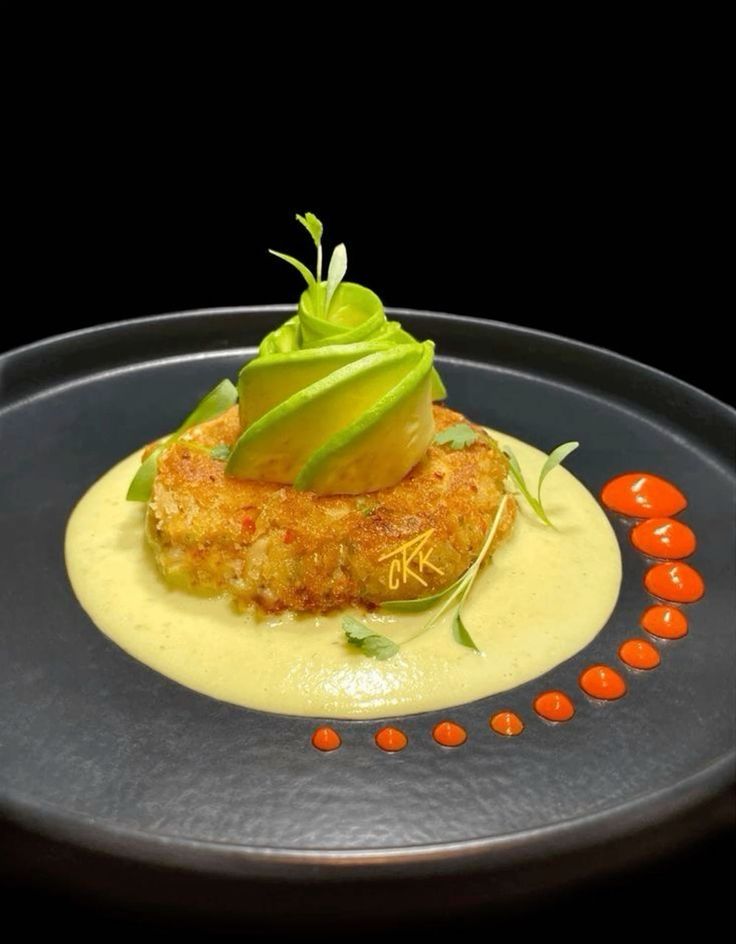 Molecular Gastronomy Chicken Cutlet with Barbecued Black Tea Seasonings
Molecular Gastronomy Chicken Cutlet with Barbecued Black Tea Seasonings
Ingredients:
- 6g barbecued black tea seasonings
- 4 boneless, skinless chicken breasts (about 6 oz each)
- Salt and freshly ground black pepper to taste
- 2 tablespoons vegetable oil
- 1 tablespoon butter
- 2 cloves garlic, minced
- 1 tablespoon chopped fresh thyme
- 1 tablespoon chopped fresh rosemary
- 1 cup chicken broth
- 1 cup white wine (such as Sauvignon Blanc)
- 1 tablespoon cornstarch (for thickening sauce)
- 2 tablespoons water
- Fresh parsley, chopped (for garnish)
- Optional: Spherical olive oil pearls or liquid nitrogen foam (for molecular garnish)
Instructions:
Season the Chicken:
- Pat the chicken breasts dry with paper towels to remove any excess moisture. Season both sides of the chicken generously with the barbecued black tea seasonings, salt, and pepper. Allow the chicken to sit at room temperature for about 15-20 minutes to come to temperature and to allow the seasonings to penetrate the meat.
Sear the Chicken:
- Heat the vegetable oil and butter in a large skillet over medium-high heat until the butter is melted and the oil is hot but not smoking. Add the chicken breasts and sear for 3-4 minutes on each side, or until a deep golden-brown crust forms. This high-heat searing helps to lock in the juices and enhances the flavor.
Add Aromatics:
- Add the minced garlic, chopped thyme, and rosemary to the skillet. Continue to cook for another 1-2 minutes, basting the chicken with the melted butter and herbs.
Deglaze the Pan:
- Carefully pour in the white wine, scraping the bottom of the skillet with a wooden spoon to deglaze and release any browned bits. Allow the wine to simmer for 2-3 minutes to reduce slightly.
Finish Cooking:
- Add the chicken broth to the skillet and bring the mixture to a gentle simmer. Reduce the heat to medium-low, cover the skillet with a lid or aluminum foil, and let the chicken cook in the liquid for another 5-7 minutes, or until the internal temperature reaches 165°F (74°C). Remove the chicken from the skillet and transfer it to a cutting board. Tent loosely with aluminum foil and let it rest for 5-10 minutes.
Make the Sauce:
- While the chicken is resting, thicken the sauce in the skillet if desired. Bring the remaining liquid to a simmer. In a small bowl, mix the cornstarch with water to form a slurry. Slowly stir the cornstarch mixture into the sauce, continuing to simmer until the sauce reaches your preferred consistency.
Prepare Molecular Garnish (Optional):
- For a molecular touch, prepare olive oil pearls by mixing 1 tablespoon of olive oil with 1 teaspoon of sodium alginate. Drop small spoonfuls into a bowl of calcium chloride solution to form pearls. Rinse the pearls in water before serving. Alternatively, create a light foam with liquid nitrogen by freezing a mixture of chicken broth and herbs in liquid nitrogen and serving it as a garnish.
Serve:
- Slice the chicken breasts against the grain into thick slices if desired. Arrange the slices on a serving platter or individual plates. Spoon the warm sauce over the top of the chicken. Garnish with chopped fresh parsley and molecular garnishes (olive oil pearls or liquid nitrogen foam) for a modern twist.
Tips for Success:
- Seasoning: The barbecued black tea seasonings add a unique, smoky flavor that complements the tender chicken. Feel free to adjust the amount based on your preference.
- Resting: Allowing the chicken to rest is crucial for retaining its juices and ensuring tenderness.
- Sauce Variation: For a different flavor profile, you can substitute the white wine with another type of wine or add a splash of lemon juice for brightness.
- Molecular Garnishes: Olive oil pearls and liquid nitrogen foam add a modern, sophisticated touch to the dish. However, they are optional and can be omitted if you prefer a more traditional presentation.
Enjoy Your Molecular Gastronomy Chicken Cutlet!
- This dish combines the tender, flavorful chicken with the complex flavors of aromatic herbs and the unique aroma of barbecued black tea seasonings. The optional molecular garnishes elevate the dish to a modern culinary experience, perfect for impressing guests at a special dinner or a unique evening at home.
